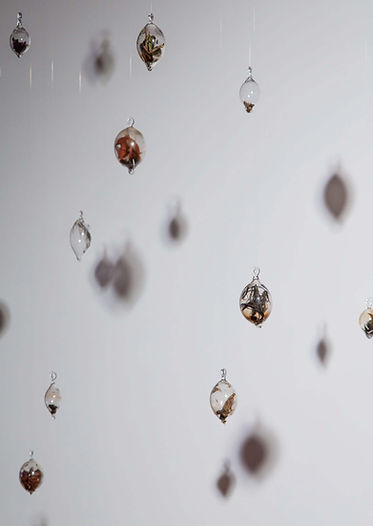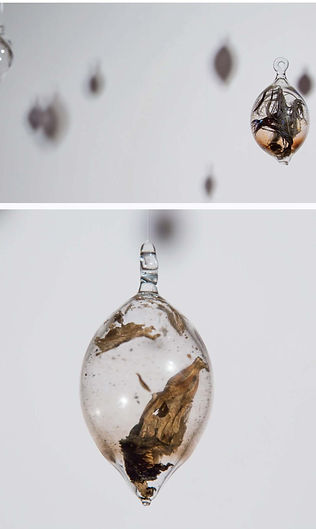Man Made Cocoons (2013)
共同制作: 角谷啓太、花形慎


Material: Glass borosilicate, organic matter picked up (bird feathers, petals, carcasses of insects, etc.)


<The eternity of borosilicate glass breaks the chains of natural circulation, as if demonstrated by vitrified high-level radioactive waste>
Borosilicate glass has a lower coefficient of thermal expansion than ordinary soda lime glass and is resistant to chemicals. So-called heat-resistant glass. These properties are bought and used for the treatment of radioactive waste. Uranium and plutonium used as fuel in nuclear power plants are recovered, and the radioactive liquid waste containing waste liquid and fission products after reuse is mixed with borosilicate glass and sealed for processing. This waste, called vitrified waste, is expected to be stored underground for hundreds of thousands to 100 million years. But, of course, the changes in people's lifestyles during this period and whether humanity will survive hundreds of thousands of years in the first place are completely unpredictable. This macroscopic time unit predicted by engineering theory is regarded as the same structure in which eternity is emphasized in the tradition of art, and it seems that "eternity" is guaranteed. The organic matter in the glass is "forever trapped" in the philosophy of the "creator". But in reality, it may be broken by some unintended contingency. It is the destruction of the work and the collapse of the idea, but it is a rebirth and hope in the sense that the organic matter trapped in the glass sphere returns to the soil, that is, it returns to the cycle of circulation on the earth.

